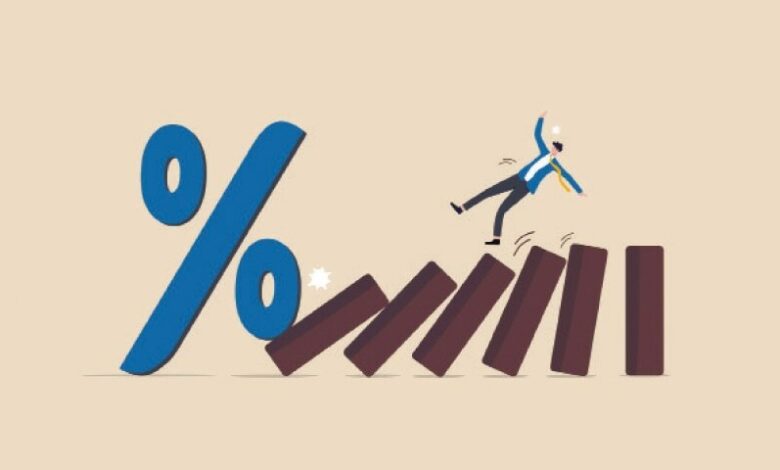Tough times ahead for the common man

Within a month and a half, the State Bank of Pakistan (SBP) raised its key policy rate by 400 basis points — first by 250bps to 12.25 per cent on April 7th ahead of the scheduled policy review on May 23rd and again by 150bps to 13.75pc on the due date of policy review.
The purpose was to contain galloping inflation amidst the political crisis in the country and the rising trend in international food and fuel prices. Since then, Imran Khan’s government has been replaced by a PML-N coalition government and Mr Khan has staged a huge political comeback and led a long march to Islamabad. He has also given the incumbent government time to announce the holding of fresh elections in June.
Meanwhile, after enough dilly-dallying, the coalition government has raised fuel oil prices by 20pc (or Rs30 per litre) on the insistence of the International Monetary Fund which has brightened chances for the revival of the bailout programme and immediate release of the $900 million worth of the seventh tranche out of the originally agreed $6 billion loan programme.
The government is trying to seek an enlargement of the loan size to at least $8bn as, according to Foreign Minister Bilawal Bhutto Zardari, ground realities have rendered the previously negotiated $6bn balance of payments support programme “outdated”.
Higher interest rates and inflation will increase the cost of production and decrease aggregate demand, resulting in joblessness and lower real incomes
The 20pc rise in prices of fuel oil effective May 27th is bound to strengthen inflationary pressures frustrating the central bank’s earlier efforts to contain inflation. Will the SBP go for another rate hike, ahead of the planned review of the monetary policy on July 7, like it did back on 7th April? Or will it wait and watch price-line movement before deciding on the due date? And, what will be the consequences of the SBP decision?
These are some key questions and the future behaviour of financial markets, in particular, and all other markets, in general, will provide a conclusive answer. And, the answer may well be influenced by what happens on the political front.
After the 150bps increase in the State Bank of Pakistan’s key policy rate on May 23rd, interest rates of commercial banks are moving up. And, what broadly determines the pace of interest rate movement is the government borrowing from banks.
This is not to suggest that the private sector’s credit demand has come to a halt after the monetary tightening. That demand is still there and continues to drive banks’ interest rates up. But the fact is that excessive government borrowing from banks goes on to crowd out the private sector.
In the first auction of Pakistan Investment Bonds (PIB)s after the recent monetary tightening, banks demanded such high yields on long-term bonds that the government ended up borrowing Rs89bn against the target of Rs100bn, SBP stats reveal.
In the bonds auction, the cut-off yields on three-year PIBs shot up by 70bps to 14pc whereas the yield on five-year bonds rose just 24bps to 13.19pc. This means banks foresee little moderation in interest rates in a three-year period but enough moderation over five years. And, they are right.
While announcing the recent 150bps increase in its policy rate the central bank was of the view that high inflation would not only persist during the current fiscal year ending in June but also through the next year. And, it linked future moderation in inflationary pressures to “ifs” and “buts”.
After the recent fuel oil price hike and the planned withdrawal of subsidies from energy products to qualify for the revival of the badly-needed IMF loan, keeping inflation from rising past the 13.4pc level seen in April would be just too difficult not only during this fiscal year ending in June but also in the next fiscal year.
Besides, imported inflation — a byproduct of the continuing fall in the rupee’s value, will continue to keep general inflationary pressures up.
The rupee has lost about 8.8pc of its value against the US dollar in less than a month and has touched a new all-time low of 202 to a greenback. (On April 30, the US dollar closed at 185.69 rupees in the interbank market but on May 26 it shot up to 202 rupees).
What triggered such massive rupee depreciation was the uncertainty revolving around the revival of the IMF loan amidst the falling foreign exchange reserves of Pakistan. SBP’s forex reserves totalled just $10.088bn on May 20, according to the latest available data — enough to cover just a little over six weeks of imports.
Moving forward, the double-dose of monetary tightening will surely suppress aggregate demand — and the eroding value of the rupee and rising fuel oil prices will continue to add to the cost of production. The most likely outcome will be a contraction in demand which may help keep inflation under some check.
But the rising cost of production and ultimate cuts in production where necessary will produce cost-push inflation. Unless demand falls too fast and broadly, overall inflation would likely remain high offering the SBP a case for further monetary tightening.
But how the rising cost of production and cuts in output would affect the life of the common man would be painful. The real income of people would fall and joblessness would increase as aggregate demand contracts — and GDP growth (estimated at 6pc in 2021-22) starts faltering next year to 3.5-4.5pc as projected by the central bank. Tough times ahead!